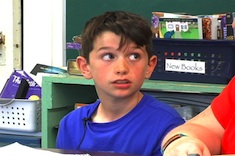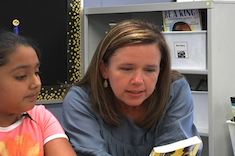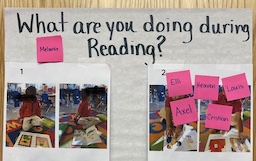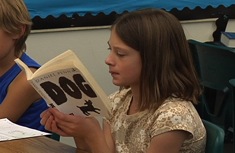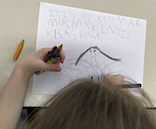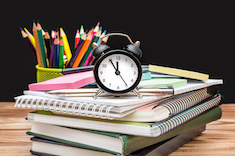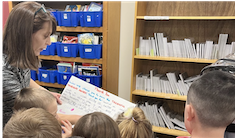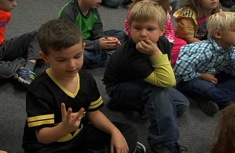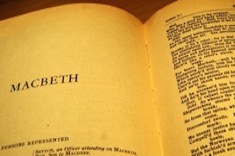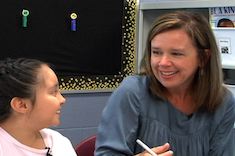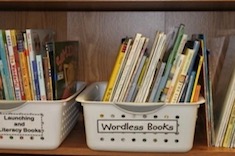Struggling and Striving Learners
It's hard work, it matters . . . and nothing brings more joy than reaching a child who is struggling. The problem is each of these students presents a unique array of challenges and needs that don't allow for a uniform approach. Here are the stories from our contributors of their breakthrough moments, one child at a time.
Latest Content
Practical Advice for Dealing with Messy Handwriting
Do struggles with handwriting matter? They do when a student can’t even decipher his own words. Katherine Sokolowski confers with fifth grader Sauvi to help him find solutions to the problem.
My Teaching Toolbox (Part 2)
Dana Murphy reminds us that having a teaching toolbox makes planning efficient and effective. In this second installment of a two-part series, Dana offers two additional approaches to delivering strong reading instruction.
Small Shifts That Make a Big Difference
Dana Murphy names two practices that made a big difference in her work as a reading specialist. You may be surprised at the simplicity and smallness that led to powerful gains in her readers.
Let’s Write Together: The Importance of Class Books
Jen Court considers whether creating class books is a valuable use of time for today’s young students. As she teases out this question, she realizes class books are a relevant and essential instructional strategy.
Creating Learning Progressions with Students
Tara Barnett and Kate Mills outline the steps to involve students in defining how to progress as readers and then set goals. They offer a practical plan for empowering students to take ownership of their learning.
Getting Ready to Read
Dana Murphy encourages us to go beyond teaching students to recognize different genres by helping them establish expectations of genres so they’ll be ready to read.
What’s Your Point of View?
Molly James helps us develop an essential point of view for uplifting choice in decision making for young writers and readers.
Alert! Mistakes in Progress
Becca Burk gives the science behind mistakes and growth, and offers suggestions on ways to use mistakes as a means to help students become critical thinkers and problem solvers.
Overcoming Challenges in Writing Workshop with Trauma-Informed Practices
Ruth Ayres shares three mindsets to help teachers prioritize connection over correction when teaching writers.
Slow Down to Meet the Needs of All Learners
In this era of pressure to perform, Vivian Chen suggests slowing down as an act of intentionality, equity, and meeting the needs of all learners.
Helping Writers Self-Correct
What to do with writers who catch errors in isolation but not in their own writing? Cathy Mere suggests three ways to help students self-correct their writing.
Do the Hard Thing
Becca Burk reminds all of us that one of the important parts of being a teacher is helping students believe they are capable. Becca shares three practical ways to uplift student capability.
Still Thinking: An Opportunity to Pause and Think Deeply
Jodie Bailey provides a structure to give students more time to think through ideas and problems. By using this practice, students gain ownership of their learning.
Spoiler Alert: You Can Start Big to Go Small (Macbeth in One Class Period)
Gretchen Schroeder confesses her fast-paced approach to sharing Macbeth with her high school students. Starting with the big picture of the story and then drilling down into specific scenes for skill practice not only accomplished the goals for the unit, but also freed up more time and space for other curriculum needs.
Student Voices First
David Pittman offers practical ways to place student voices first in classrooms in order for their passions, interests, and identities to influence our teaching.
Routines That Normalize Mistakes
We all know that mistakes are part of learning and that safe environments for risk-taking allow students to grow, but how do you take the sting out of making mistakes? David Pittman offers advice on ways to normalize mistakes in math.
Renewing Energy in the Classroom
Gretchen Schroeder finds ways to increase students’ energy for doing work in her classroom. Her practical tips are useful for all students.
Engaging Kids in Reading Intervention
Dana Murphy shares ways to make reading intervention a high-interest time for students.
Questions to Ask When Reading the Morning Message
Tammy Mulligan guides teachers in a progression to help students identify tricky words, move deeper into word analysis, and develop inferential thinking. Included is a helpful progression chart to guide teachers in helping all students understand that readers encounter problems and can solve the tricky words.
Reading Specialists Can Change the Narrative
Cathy Mere shares ways reading specialists can help teachers get excited about striving readers’ growth by intentionally sharing progress and celebrations.
What Matters More
Dana Murphy shares that by asking “What matters most?” she can make decisions that allow her literacy instruction to be student-centered and authentic.
Learning Joy
Bitsy Parks shares the story of a striving student, and pinpoints the elements of a rich workshop classroom that supports finding joy in becoming literate.
Planning for Virtual Literacy Intervention
Stephanie Affinito curated a wise and useful guide to plan virtual literacy intervention. Useful resources are included for those who are teaching remotely or in person.
The Reluctant Marathoner: Reflecting on Student Engagement
Gretchen Schroeder uses her reluctance as a marathon runner to reflect on how to encourage more engagement in reading and writing.
The Answer Is Always “Yes”
Julie Johnson shows how saying yes empowers students to do the work of writers: make decisions, experiment, build relationships, and be confident as a writer.
Hanging Out, Messing Around, Geeking Out (or, how to give students the resources, space, and time for self-directed literacy learning)
Matt Renwick challenges educators that if we believe that social and emotional learning is just as important as academics, then we ought to use resources, space, and time to support self-directed learning.
What’s the Most Beautiful Thing You Know About . . . ?
Ruth Shagoury and Melanie Quinn asked their colleagues to share the “most beautiful thing” about the puzzling student each of them is looking at closely in their study group. This is a great activity if you’re looking for a quick and easy icebreaker to spark some positive energy in your next study group or staff meeting and to remind everyone of the joys of our profession.
Tracking Thinking: Fifth-Grade Small Group
Julianne Houser meets with a small group of fifth graders to help them build skills for tracking thinking.
Book Selection for Early and Emergent Readers
Some emergent readers happily browse for books and explore them independently. For others, it’s a struggle. Cathy Mere shares her favorite strategies for helping all readers get comfortable with selecting books on their own.
Self-Esteem and Literacy: Understanding Jeff
Jeff is apathetic and unengaged. To help this middle school learner, Mark Levine needs to understand his history. Mark shows the power of interviews for connecting with struggling teen learners.
Browse Content By
Type
Category
- Assessment Tools
- Big Fresh Archives
- Booklists
- Choice Numeracy
- Classroom Design
- Common Core
- Community Building
- Conferring
- Content Literacy
- Digital Literacy
- English Language Learners
- Equity
- Family Relations
- Free Samples
- Guiding Groups
- Leadership
- Literacy Coaches
- Mentor Texts
- Minilessons
- New Teacher Mentors
- Podcasts
- Poetry
- Quote Collections
- Reading Strategies
- Self Care
- Struggling and Striving Learners
- Talking and Listening
- Teacher Study Groups
- Teaching Reading
- Teaching Writing
- Word Study and Vocabulary
Author
- Melissa Quimby
- Nawal Qarooni
- Gwen Blumberg
- Julie Cox
- The Lead Learners
- Hannah Tills
- Josie Stewart
- Ruth Metcalfe
- Mallory Messenger
- Becca Burk
- Jodie Bailey
- Vivian Chen
- Mary Brower
- Tiffany Abbott Fuller
- Stephanie Affinito
- Ruth Ayres
- Leigh Anne Eck
- Heather Fisher
- Shari Frost
- Julie Johnson
- Suzy Kaback
- Gigi McAllister
- Shirl McPhillips
- Melanie Meehan
- Cathy Mere
- Debbie Miller
- Tara Barnett and Kate Mills
- Tammy Mulligan
- Dana Murphy
- Bitsy Parks
- David Pittman
- Brenda Power
- Heather Rader
- Matt Renwick
- Mandy Robek
- Christy Rush-Levine
- Gretchen Schroeder
- Jen Schwanke
- Brian Sepe
- Katherine Sokolowski
- Stella Villalba
- Jennifer Vincent
Grade Level
Choice Literacy Membership
Articles
Get full access to all Choice Literacy article content
Videos
Get full access to all Choice Literacy video content
Courses
Access Choice Literacy course curriculum and training

